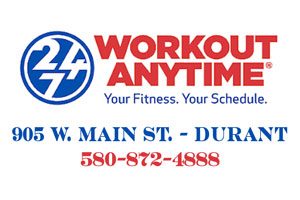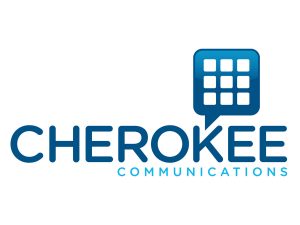Workout Anytime
Greg Maurer
So what is NAD+ anyway?
NAD operates at the core of the energy system within each of your cells. It has two forms, NAD+ and NADH, which indicate whether or not the NAD is ready to pick up and deliver electrons for use in the mitochondria that produce the energy your cells require. Cells need NAD+ to perform many cellular functions – everything from repairing themselves, to replicating into new cells and to maintain healthy ‘homeostasis’ in the cell. This applies to all of the cell types in your body, from the liver, the heart, in the brain, your skin and more!
NAD+ is the ‘starting’ point for healthy cellular energy production when it is available to pickup electrons and make them available to the mitochondria. Simply put – higher levels of NAD+ mean more energy is available for all of the required cellular functions for a healthy you.
Unfortunately, many of the stressors of life can put downward pressure on your NAD+ levels, meaning all of the important mechanisms discussed above don’t have the energy required to do their job. Inflammation, poor nutrition, stress and even aging itself lead to reduced NAD+ levels over time. By the time you are in your 60s or 70s, you’re likely to have half the NAD+ levels you did when you were 20.
Thankfully, science is revealing great new insights into why NAD+ levels fall and what we can do to intervene and stay healthy at a cellular level as we age.
The following are a few techniques and strategies for boosting sagging NAD levels.
- Exercise
Exercise is one way to boost your overall NAD+ levels.
While individual sessions of exercise, particularly challenging endurance exercise or exercise to exhaustion (think of doing repeat sets of burpees!) will deplete cellular energy (NAD+ levels), the body’s response will be to make more NAD+ available after it recovers, so as to be ‘ready’ for that type of exercise stimulus to show up again. 
This means higher average NAD+ levels for regular exercisers. There is not yet enough data to select which types of exercise are best for boosting your NAD+ levels, however there is good data looking at how mitochondria (the energy producers within the cell) density and function change with different types of exercise. This can give us some insights into how specific exercise will impact NAD+ levels.
In general, exercise that is done over longer periods of time (endurance style, aerobic exercise) will increase mitochondrial efficiency most effectively. This means there are more, healthier mitochondria on average, and, probably, higher NAD+ levels.
- Fasting
The connections between fasting and NAD+ levels are not as clear as for exercise.
On one hand, we know that fasting activates DNA repair, which consumes NAD+. While fasting, you are also reducing the amount of food intake, which is of course the primary source of cellular energy! Both of these would mean that NAD+ levels should drop.
However, fasting is also reducing inflammation, which is one of the primary reasons NAD+ levels fall with age. One known source of NAD+ depleting inflammation is the inflammatory cytokine CD38 (cytokines are chemical messengers produced by the body). CD38 is known to increase with age and its influence is directly related to the burden of ‘senescent’ cells (so called ‘zombie cells’).
Senescent cells are cells that have stopped functioning properly and have failed to activate their preset cellular destruct process built into our cells to prevent cancer and senescent cell accumulation. These types of senescent cells increase inflammation and cancer risk and increase with age. 
Fasting is also known to stimulate autophagy (cellular cleaning and recycling) along with programmed cell death described above. These processes can lower the number of senescent cells in the body. What does that mean? Less CD38 results in increased NAD+ levels.
So, again, NAD+ levels and fasting are a bit more complicated, but as with most things related to health and food – ‘less is more’ seems to hold true. The bodily repair that fasting enables is likely to be an effective strategy for maintaining health NAD+ levels.
- Nutritional Supplements
Nutritional Supplements and NAD+ levels are where it starts to get really interesting. In just the past few years, we’ve become aware of two ‘NAD Booster’ molecules, which when taken orally are proven to boost NAD+ levels. Supplementation is so far the only way to sustain sufficient and healthy NAD levels as we age.
These ‘NAD precursors’ are the raw ingredient for cellular energy. The thinking goes – when these precursors are consumed in supplement form, they are then more readily available for the cell to use them as energy.
Importantly, these precursors both appear to have the ability to enter the cell directly, meaning they can increase NAD+ where it matters most – inside of the cell, where the energy is used for important tasks like DNA repair and cell replication. 
These two precursors are Nicotinamide Riboside (NR) and Nicotinamide Mononucleotide (NMN). To date, we have a bit more science on the positive benefits of NR, but clinical trial data (science in humans) for NMN is advancing quickly, and NMN is more popular.
Which of these forms of NAD boosting are best for a given individual is hard to predict – which is where another valuable technology can assist you in you quest for higher NAD+ levels. That’s NAD+ at home test kits! With just a few drops of blood from a finger prick, you can test your ‘before’ and ‘after’ NAD+ levels with either (or both, separately) NR or NMN, to see which one increases your NAD+ levels the most. This is a key metric as you age and it is recommended to test once every 6 months.
Two other supplements can assist in boosting NAD+ levels by decreasing the activity of the CD38 enzyme mentioned above which increases with age and causes the body to use much more NAD+. These supplements are Quercetin and Apigenin which are both bioflavonoids.
Quercetin can be found in many foods with the highest levels in red onions and capers while the highest levels of Apigenin are found in chamomile and parsley. Unfortunately, the levels required to reduce CD38 significantly are very difficult to get even from eating these food sources.
In addition both of them are not easily absorbed. The good news is that both are available in forms that optimize delivery into your cells by binding them to another molecule for transport.
Our partners at www.donotage.org/products offer the optimal forms of both quercetin and apigenin along with most absorbable form of NMN – Nicotinamide Mononucleotide. Any of these supplements alone can boost NAD+ levels but together can be particularly powerful.
Boosting NAD+ levels has profound effects on improving cellular energy and health with benefits including:
Improving Exercise Capacity
Improved Heart Health
Improved Cognitive Function
Improved Energy Levels
Increased Metabolic Rate
Increase Cellular Regeneration
Reduced Inflammation
Reduced Agining


